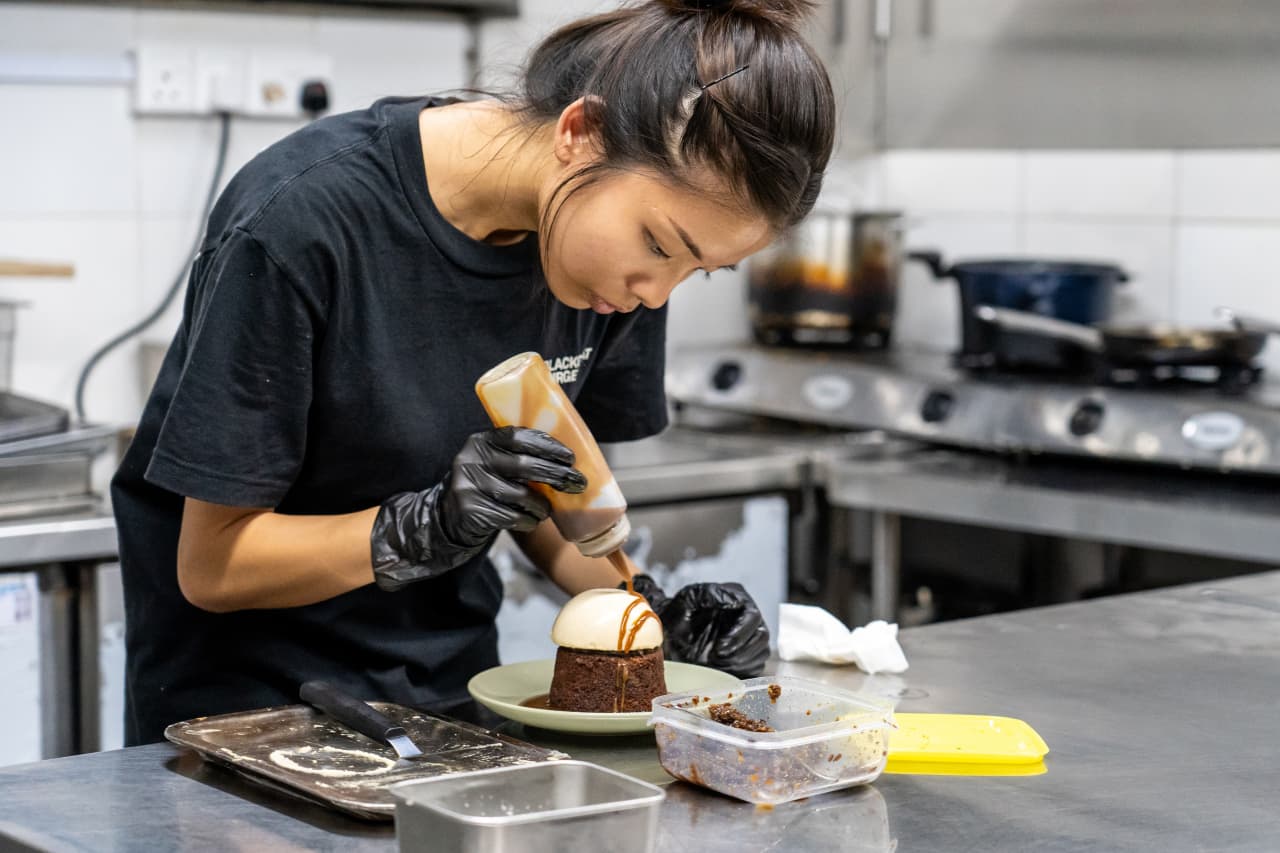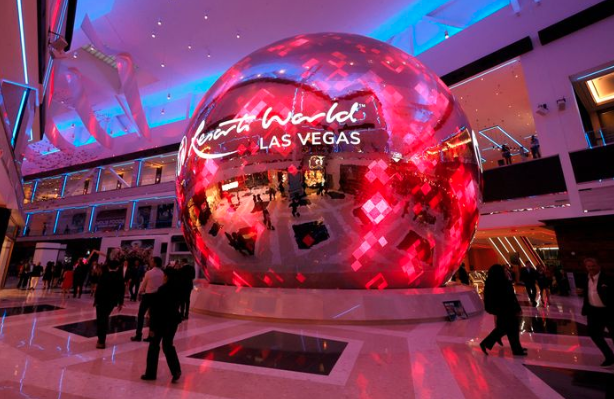You’re Back at the Office. Your Annoying Colleagues Are, Too.
Employees are rediscovering the pet peeves that come with working inches apart from one another.
It didn’t take long for Gary Bush to become reacquainted with the harsh realities of office life after two years of working out of his home.
Within a matter of days, the sales manager for an auto dealership found himself having to break up a spat between two employees over a large container of apple juice. One said she brought it in and left it in the office refrigerator to drink later that day. The other conceded to consuming most of it, but argued that he wasn’t at fault because it wasn’t labelled as hers.
“Any little thing that happens they come to me,” said Mr. Bush, 36 years old. “It’s like I’m a babysitter.”
In recent months, many more professionals who were sent home at the start of the health crisis have been returning to the workplace, where they’re being reminded of the pet peeves that come with sitting inches apart from one another. Some say having to once again deal with office politics, loud chatter and other workplace grievances is already making them nostalgic for when they were only able to engage with their peers over the phone or online.
When Andrew Hashem resumed working in an office for a software company, he figured that stepping into a glass office and closing the door to make a phone call would be enough to discourage colleagues from interrupting him. “They would knock, I’d point to my headset and they would still come in,” he said.
A new makeshift bar set up near Mr. Hashem’s desk for Wednesday afternoon social gatherings added to his discomfort. The fun would often start while he was still on the clock, but many of his peers weren’t.
“I could hear them having loud conversations and playing music,” said the 35-year-old, who recently changed to a fully remote job with a healthcare company. “It made it really hard to concentrate.”
Migrating back to the workplace after spending so much time away can be a bit of a culture shock for many professionals, said Katie Burke, chief people officer at HubSpot Inc. “There was this romanticising of the office experience,” she said. “Now we’re seeing a return to normalcy.”
Workers may need a little time to readjust to a challenging commute or a new one for those who changed jobs, added Ms. Burke.
“Everyone can benefit from taking a deep breath before going in and approaching things with a little bit of kindness,” she said. “When in transition everyone tends to forget what the expected rules of the road are.”
Now that Josh Ross is spending his days in a cubicle farm again, the tech-company support specialist said he is back to being flanked by noisy co-workers. Audible sighs of frustration are a common irritant, along with the sound of his peers typing on mechanical keyboards.
“All you hear is the clacking of the keys,” said Mr. Ross, 31, adding that he mutes his microphone on calls with customers when he isn’t speaking so they aren’t bothered, too.
Mr. Ross longs for the days when he could work out of his home in Lansing, Mich., where he lives by himself. There, he said, “I control the sound level. In the office, there’s literally no sound control.”
Companies calling staffers back to the workplace in many cases are offering hybrid schedules, allowing people to come in only a few days a week. But for Matt Shantz of Winnipeg, the arrangement has created a headache he didn’t anticipate.
During video calls with colleagues still working remotely, he now hears the voices of other office workers in real time through a wall—and then again about half a second later through his computer.
“There’s a slight delay,” said Mr. Shantz, an academic adviser for a university, who went back to working in an office in May. “It’s an echo chamber.”
Even if all of his colleagues eventually resume working on campus, the 37-year-old expects to be stuck dealing with another inconvenience—thermostat wars. Mr. Shantz is comfortable working without air-conditioning in the summer but some of his office mates prefer to turn it on. A vent located directly above his desk makes him shiver.
“It sometimes gets to the point where I have two sweaters on,” he said.
Many companies used the downtime to remodel or reconfigure offices.
Mae Tila, a 36-year-old customer-care manager, initially didn’t mind when she found out her employer, a mailing and printing company, moved her desk to the front of the building because she went in only a few days a week. But now back to a routine of going in full time, along with many of her colleagues, it’s clear to her she’s literally in a weird spot. “Everybody walks by me to get to their designated area,” she said. “I get everyone’s life story.”
Ms. Tila has started saying only “Good morning” when colleagues come in and not also “How are you doing?” in hopes of discouraging small talk. But it rarely works. Recently a colleague griped to her about the challenges of babysitting grandchildren and a dog at the same time.
“I’m a private person so when people spill their lives to me it’s overwhelming,” Ms. Tila said.
Some office workers who have been back longer say the change of scenery was initially refreshing—until it wasn’t.
Destiny Palmerin, a sales and marketing coordinator for a health-product manufacturer said her attitude started to sour once she started hearing her boss clipping his fingernails at work. “I know what that sound is,” she said. “I should not hear that.”
Ms. Palmerin, 24, grew leerier of colleagues as competition for the office microwave started to cut into lunch break. “Almost everybody goes to lunch at the same time,” she said. She’s also been unhappily reminded of what it’s like to work after someone burns popcorn. “You can smell it everywhere,” she said.
Mr. Bush, the dealership sales manager, expected his colleagues to have kicked at least one bad habit over the past two years—coming to work despite feeling sick. Yet a few weeks ago a sales associate who went home early for that reason returned the next morning, he said, seemingly worse off—not a comforting sight in the Covid era.
“She’s coughing and sneezing,” he said. “I’m like, dude, go home.”
The associate wanted to stay to increase the chances of landing a bonus, since part of the compensation is commission-based, but Mr. Bush insisted the worker go home, he said. “I was super annoyed.”
Reprinted by permission of The Wall Street Journal, Copyright 2021 Dow Jones & Company. Inc. All Rights Reserved Worldwide. Original date of publication: August 3, 2022
 Copyright 2020, Dow Jones & Company, Inc. All Rights Reserved Worldwide. LEARN MORE
Copyright 2020, Dow Jones & Company, Inc. All Rights Reserved Worldwide. LEARN MORE
This stylish family home combines a classic palette and finishes with a flexible floorplan
Just 55 minutes from Sydney, make this your creative getaway located in the majestic Hawkesbury region.
No trip to Singapore is complete without a meal (or 12) at its hawker centres, where stalls sell multicultural dishes from generations-old recipes. But rising costs and demographic change are threatening the beloved tradition.
In Singapore, it’s not unusual for total strangers to ask, “Have you eaten yet?” A greeting akin to “Good morning,” it invariably leads to follow-up questions. What did you eat? Where did you eat it? Was it good? Greeters reserve the right to judge your responses and offer advice, solicited or otherwise, on where you should eat next.
Locals will often joke that gastronomic opinions can make (and break) relationships and that eating is a national pastime. And why wouldn’t it be? In a nexus of colliding cultures—a place where Malays, Indians, Chinese and Europeans have brushed shoulders and shared meals for centuries—the mix of flavours coming out of kitchens in this country is enough to make you believe in world peace.
While Michelin stars spangle Singapore’s restaurant scene , to truly understand the city’s relationship with food, you have to venture to the hawker centres. A core aspect of daily life, hawker centres sprang up in numbers during the 1970s, built by authorities looking to sanitise and formalise the city’s street-food scene. Today, 121 government-run hawker centres feature food stalls that specialise in dishes from the country’s various ethnic groups. In one of the world’s most expensive cities, hawker dishes are shockingly cheap: A full meal can cost as little as $3.
Over the course of many visits to Singapore, I’ve fallen in love with these places—and with the scavenger hunts to find meals I’ll never forget: delicate bowls of laksa noodle soup, where brisk lashes of heat interrupt addictive swirls of umami; impossibly flaky roti prata dipped in curry; the beautiful simplicity of an immaculately roasted duck leg. In a futuristic and at times sterile city, hawker centres throw back to the past and offer a rare glimpse of something human in scale. To an outsider like me, sitting at a table amid the din of the lunch-hour rush can feel like glimpsing the city’s soul through all the concrete and glitz.
So I’ve been alarmed in recent years to hear about the supposed demise of hawker centres. Would-be hawkers have to bid for stalls from the government, and rents are climbing . An upwardly mobile generation doesn’t want to take over from their parents. On a recent trip to Singapore, I enlisted my brother, who lives there, and as we ate our way across the city, we searched for signs of life—and hopefully a peek into what the future holds.
At Amoy Street Food Centre, near the central business district, 32-year-old Kai Jin Thng has done the math. To turn a profit at his stall, Jin’s Noodle , he says, he has to churn out at least 150 $4 bowls of kolo mee , a Malaysian dish featuring savoury pork over a bed of springy noodles, in 120 minutes of lunch service. With his sister as sous-chef, he slings the bowls with frenetic focus.
Thng dropped out of school as a teenager to work in his father’s stall selling wonton mee , a staple noodle dish, and is quick to say no when I ask if he wants his daughter to take over the stall one day.
“The tradition is fading and I believe that in the next 10 or 15 years, it’s only going to get worse,” Thng said. “The new generation prefers to put on their tie and their white collar—nobody really wants to get their hands dirty.”
In 2020, the National Environment Agency , which oversees hawker centres, put the median age of hawkers at 60. When I did encounter younger people like Thng in the trade, I found they persevered out of stubbornness, a desire to innovate on a deep-seated tradition—or some combination of both.
Later that afternoon, looking for a momentary reprieve from Singapore’s crushing humidity, we ducked into Market Street Hawker Centre and bought juice made from fresh calamansi, a small citrus fruit.
Jamilah Beevi, 29, was working the shop with her father, who, at 64, has been a hawker since he was 12. “I originally stepped in out of filial duty,” she said. “But I find it to be really fulfilling work…I see it as a generational shop, so I don’t want to let that die.” When I asked her father when he’d retire, he confidently said he’d hang up his apron next year. “He’s been saying that for many years,” Beevi said, laughing.
More than one Singaporean told me that to truly appreciate what’s at stake in the hawker tradition’s threatened collapse, I’d need to leave the neighbourhoods where most tourists spend their time, and venture to the Heartland, the residential communities outside the central business district. There, hawker centres, often combined with markets, are strategically located near dense housing developments, where they cater to the 77% of Singaporeans who live in government-subsidised apartments.
We ate laksa from a stall at Ghim Moh Market and Food Centre, where families enjoyed their Sunday. At Redhill Food Centre, a similar chorus of chattering voices and clattering cutlery filled the space, as diners lined up for prawn noodles and chicken rice. Near our table, a couple hungrily unwrapped a package of durian, a coveted fruit banned from public transportation and some hotels for its strong aroma. It all seemed like business as usual.
Then we went to Blackgoat . Tucked in a corner of the Jalan Batu housing development, Blackgoat doesn’t look like an average hawker operation. An unusually large staff of six swirled around a stall where Fikri Amin Bin Rohaimi, 24, presided over a fiery grill and a seriously ambitious menu. A veteran of the three-Michelin-star Zén , Rohaimi started selling burgers from his apartment kitchen in 2019, before opening a hawker stall last year. We ordered everything on the menu and enjoyed a feast that would astound had it come out of a fully equipped restaurant kitchen; that it was all made in a 130-square-foot space seemed miraculous.
Mussels swam in a mushroom broth, spiked with Thai basil and chives. Huge, tender tiger prawns were grilled to perfection and smothered in toasted garlic and olive oil. Lamb was coated in a whisper of Sichuan peppercorns; Wagyu beef, in a homemade makrut-lime sauce. Then Ethel Yam, Blackgoat’s pastry chef prepared a date pudding with a mushroom semifreddo and a panna cotta drizzled in chamomile syrup. A group of elderly residents from the nearby towers watched, while sipping tiny glasses of Tiger beer.
Since opening his stall, Rohaimi told me, he’s seen his food referred to as “restaurant-level hawker food,” a categorisation he rejects, feeling it discounts what’s possible at a hawker centre. “If you eat hawker food, you know that it can often be much better than anything at a restaurant.”
He wants to open a restaurant eventually—or, leveraging his in-progress biomedical engineering degree, a food lab. But he sees the modern hawker centre not just as a steppingstone, but a place to experiment. “Because you only have to manage so many things, unlike at a restaurant, a hawker stall right now gives us a kind of limitlessness to try new things,” he said.
Using high-grade Australian beef and employing a whole staff, Rohaimi must charge more than typical hawker stalls, though his food, around $12 per 100 grams of steak, still costs far less than high-end restaurant fare. He’s found that people will pay for quality, he says, even if he first has to convince them to try the food.
At Yishun Park Hawker Centre (now temporarily closed for renovations), Nurl Asyraffie, 33, has encountered a similar dynamic since he started Kerabu by Arang , a stall specialising in “modern Malay food.” The day we came, he was selling ayam percik , a grilled chicken leg smothered in a bewitching turmeric-based marinade. As we ate, a hawker from another stall came over to inquire how much we’d paid. When we said around $10 a plate, she looked skeptical: “At least it’s a lot of food.”
Asyraffie, who opened the stall after a spell in private dining and at big-name restaurants in the region, says he’s used to dubious reactions. “I think the way you get people’s trust is you need to deliver,” he said. “Singapore is a melting pot; we’re used to trying new things, and we will pay for food we think is worth it.” He says a lot of the same older “uncles” who gawked at his prices, are now regulars. “New hawkers like me can fill a gap in the market, slightly higher than your chicken rice, but lower than a restaurant.”
But economics is only half the battle for a new generation of hawkers, says Seng Wun Song, a 64-year-old, semiretired economist who delves into the inner workings of Singapore’s food-and-beverage industry as a hobby. He thinks locals and tourists who come to hawker centers to look for “authentic” Singaporean food need to rethink what that amorphous catchall word really means. What people consider “heritage food,” he explains, is a mix of Malay, Chinese, Indian and European dishes that emerged from the country’s founding. “But Singapore is a trading hub where people come and go, and heritage moves and changes. Hawker food isn’t dying; it’s evolving so that it doesn’t die.”
This stylish family home combines a classic palette and finishes with a flexible floorplan
Just 55 minutes from Sydney, make this your creative getaway located in the majestic Hawkesbury region.





















